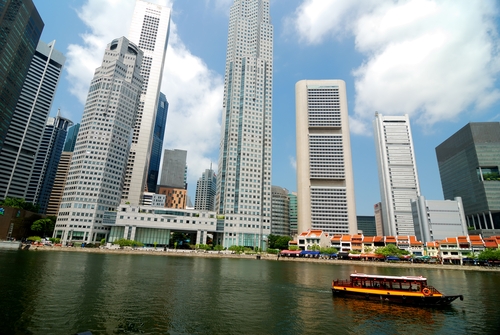
3 things that give S-REITs an edge over Asian REITs
For one, a hike in interest rates is unlikely in Singapore until end 2014.
Here's more from Maybank Kim Eng:
Higher Capitalization Rates:
o On a sector basis, Singapore has relatively higher normalised cap rates (net property income that can be extracted per annum for each S$ dollar invested in investment properties), compared to Hong Kong and Japan.
o For example in HK, cap rates (net basis) for prime office and prime retail buildings on a stabilized basis are around 3%-3.5% and 3.5%-4% respectively. However, in Singapore, cap rates for prime office and prime retail properties are at least 4.0% and 5.0% respectively.
o This enables S-REITs to offer DPU yields of ~6% without trading at price-to-book discount (1.07x PBR). On the other hand, in order to offer DPU yields of ~5%, HK-REITs and J-REITs have to trade at ~0.8x PBR.
Unlikely interest rates hike until end 2014:
o The MAS manages the Sing dollar's strength by buying or selling currencies to keep its exchange rate against major currencies within a policy band, and by adjusting the band occasionally to steer the exchange rate. This FX-centred monetary policy regime means that Singapore's short-term interest rates are essentially a function of US short-term interest rates.
o Most economists do not expect any significant interest rates hike until end of 2014, following the US Fed’s intent to keep short-term interest rates near zero till then. If correct, this would imply that the cost of borrowings for S-REITs (some pegged to SIBOR) will stay at current low levels through 2012-2014.
Others reasons:
o The strong SGD, chasing yields climate and lack of investable alternatives in the market are other factors providing price support for S-REITs. Investors are also drawn to the transparency and predictability of S-REIT dividends, particularly in the midst of the external market uncertainty
























 Advertise
Advertise






